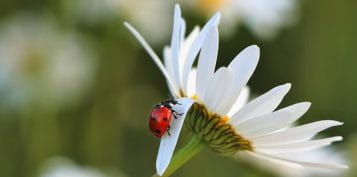Good Luck Animals – Attracting Positive Energy
The world we live in is stunningly diverse and colourful. The many cultures around the world have different perspectives for good and bad, for normal and weird. However, there are certain things we all somehow agree on. In this article, we’ll tell you about good luck animals – universal symbols for fortune and prosperity.
What really makes our little universe unique are all its wonderful animals and living organisms. The waters, inhabited by magical creatures and exotic lands, are home to divine beings and scary beasts. Well, in this article we’ll dive deep into a fantasy world of myths, occult beliefs and superstitions, so get ready.
Good Luck Animals Around the World
Here is our listing of the good luck animals around the world, represented in different cultures through legends, ancient beliefs and customs. Join us on our quest, and challenge yourself to look beyond and why not even discover new lucky animals on the way.
| 🍀 Lucky Animals | 🗺️ Culture |
|---|---|
| Elephant | Chinese culture, Indian culture |
| Bat | Chinese Culture |
| Dolphin | Ancient Greek culture, Turkish, Egyptian culture, Italian culture, American |
| Ladybug | Greek culture, European, American culture, Chinese, Japanese Culture, ancient Celtic culture |
| Deer | Chinese culture, Native American culture |
| Stork | Norse culture, Greek culture, Native American culture, European culture, Slavic culture, Asian culture, Egyptian culture |
| Goldfish | Chinese culture, Slavic culture, European culture, Chinese culture, Egyptian culture, American culture |
| Horse | Chinese culture, Ancient Greek culture, European culture, American culture, Slavic culture |
| Tiger | Asian Culture, Chinese culture |
| Pig | Chinese culture, European culture, American culture |
| Frog | Chinese culture, Agricultural societies, Asian culture, American culture, Japanese culture |
| Rabbit | Chinese culture, American culture, European culture |
| Unicorn | Ancient Greek culture, Vietnamese culture, Indian culture, Scottish culture, Mesopotamian culture, European culture, American culture |
| Phoenix | Chinese culture, Greek culture, Egyptian culture, European culture |
| Dragon | Chinese culture, Asian culture, Japanese culture |
Elephant

For many of us, when thinking of good luck animals, elephants would be one of the first images that come to our minds. These beautiful creatures play a significant role in Asian culture but are also honoured and worshipped worldwide.
In the Indian Hindu religion, the elephant is connected to the Lord Ganesha – the god of luck and fortune and remover of obstacles. In Buddhism, elephants represent Buddha and are sacred. It is believed that Buddha lived as an elephant many times before being reincarnated as a human. Thus, the elephant is considered to be one of the lucky animals, a symbol of wisdom, strength, fortune and protection.
Bat

Bats may seem scary to many of you, but the Chinese say you should consider yourself lucky if having such a visitor. It’s because these animals, with their heightened senses, only seek out auspicious places. Moreover, bats nesting in your home is an omen of wealth to come. Here’s another interesting fact, the Chinese word for bat literally means also ‘good luck’.
In China, bats are featured on amulets, greeting cards, and all types of souvenirs. They are Chinese good luck animals, symbols of good fortune, longevity, wealth and happiness. In Europe, on the other side, bats represent rebirth, new beginnings, and death.
Dolphin

Who hasn’t come across or heard of myths and legends of dolphins being our protectors and even saving people’s lives? These good luck animals have long played a significant role in various cultures. It is believed that their name comes from the Greek word ‘delphi’, which means womb. Dolphins are regarded as animals for good luck and peace by a number of cultures around the globe, including Ancient Greece, Turkey, Italy, the USA, and Egypt.
For sailors, encountering a dolphin meant that the land was near and that good fortune was ahead. These lucky animals have become a symbol of luck, protection, freedom, intelligence, peace and joy. Keeping a dolphin figurine in your home is known to attract good fortune and peace. If by any chance you are feeling extra lucky today, enter the top online casinos for 2025 so you can test them.
Ladybug

The next on our list of animals that bring good luck is a pretty one – the ladybug. This little charming creature is undoubtedly amongst the most popular good luck symbols in the world. Some say that if a ladybug lands on you, the number of its black spots reveals the months full of good luck you’re going to enjoy. Others say that if a ladybug lands on you, you should make a wish. The spots will tell you how many months it will take for it to come true.
Many also believe that if you happen to harm one of these little creatures, bad luck will follow you. So, in case you get lucky enough, and a ladybug says hello, that’s believed to be your ‘kiss of good luck’. Just enjoy the lovely colours and dare to make a wish. Overall, cross-culturally the ladybug is viewed to be a talisman of luck, good fortune, love and granted wishes.
Deer

The deer is one of the most graceful, elegant and gentle animals to ever live on planet Earth. This divine being is also a popular representative of the Chinese good luck animals. Not only that, but deers have a long history in Native American culture, where they’re regarded as animals for good luck as well.
They are often featured in artwork and souvenirs to symbolise luck, success, higher knowledge and intuitiveness. Along with that, deers are frequently displayed as a sign of wealth and abundance. Another placement for this lucky animal is within the health sector, where it’s considered to be a symbol of health and protection.
Stork

Across centuries, the stork has had a notable impact on human culture. We all know the legend of babies being brought by storks. This elegant bird is a symbol of fertility and luck worldwide and is frequently featured in post stamps, art, greeting cards, souvenirs and more.
Storks are famous figures in different mythologies, beliefs and cultures all around the world. In Norse mythology, storks were a symbol of monogamy and family values, as well as fertility. In European culture, this bird stands for a new life, paternal responsibility and maternal instincts. On the other side, the Native Americans connected the stork to rebirth and renewal, believing that it would come from the heavens during a person’s burial and guide their soul.
Goldfish

The following on our list of animals that are good luck is a lovely water creature, well-known in today’s pop culture, movies and stories. Goldfish are one of the eight sacred symbols of Buddha, a symbol of fertility, harmony and abundance. The Ancient Greeks believed goldfish to bring good luck to their marriages, while Egyptians brought them into their homes to attract good fortune and positivity.
In feng-shui, these swimmers are symbols of prosperity and good luck because of their ability to procreate rapidly. Not surprisingly, their distinct colour is also related to abundance and wealth. Today, this good-luck animal is one of the most common household pets in the world.
Horse

Horses have done a great deal for society and humankind. These strong and beautiful creatures’ immense help in war, transportation and agriculture has given them a special place in our life and our culture. For instance, you have all probably heard of the beloved winged horse Pegasus and its many heroic adventures in Greek mythology.
Because of their strength and their speed, these good luck animals are seen as symbols of power, beauty, freedom and industry. According to old legends, horses have the ability to see beyond what humans can see and thus protect us from evil forces. Up to this day, the horseshoe is still one of the most famous lucky symbols. People hang it on the front door of their homes to ward off evil spirits and to attract prosperity.
Tiger

Next on our list of animals that are good luck is the tiger – inarguably one of the most majestic and breathtaking living beings. This animal is particularly well-represented in Chinese culture being a crucial part of their horoscope. Furthermore, it is also associated with Tsai Shen Yeh – the Chinese god of wealth, usually portrayed sitting on a tiger.
In this regard, the tiger represents power, wealth and prosperity. According to old Chinese legends, tigers are known to have the power to banish evil forces, and their images are commonly hung on the wall during the Chinese New Year as a talisman.
Pig

It may surprise you, but it is no coincidence that people keep their money in piggy banks. In fact, feeding the piggy bank is not only an effort to save money but also symbolises our efforts for a prosperous future.
Many cultures associate the pig as a good luck animal, including Ireland, Germany, China and others. In Germany, you’ll often see pigs on greeting cards. It is also common for Europeans to keep pig charms in their home as it’s believed to bring wealth. In China, this adorable pink animal is a part of their astrology signs, just like the tiger. Furthermore, the Chinese believed that it attracts plenty of good luck and success for those who are self-employed.
Frog

Honestly, this next representative, part of our list of animals that are good luck, is quite weird. For example, here’s an interesting fact for those of you who don’t know this yet – frogs are cold-blooded animals. Now when we add to the equation their strange colours and funny appearance, it might come as a surprise for some that they are actually considered good luck animals in a number of cultures.
In China, the frog is one of the most notable animals, symbol of good luck and wealth. How many of you have seen one of those popular three-legged money frog amulets? Based on the legend, an immortal named Lu-Hai once saved a three-legged frog, and in gratitude, every day, she gave him a golden coin from a secret treasure and made him rich.
The story and these three-legged statues are not only lucky charms but also a reminder that good deeds eventually pay off. Last but not least, frogs are related to rain and therefore honoured and viewed as good luck animals in agricultural societies that depend on rain and favourable weather.
Rabbit

Rabbits are universal good luck animals, symbols of fertility and rebirth. We all associate them with spring, Easter and of course the Easter Bunny. Some cultures also believe that a rabbit’s foot brings protection and good fortune, so they often carry it as an amulet. Note that this belief is found in many parts of the world, and its earliest record is in Europe, year 600 BC.
In China, the rabbit is an astrology sign and a feng shui symbol for fertility and abundance. A well-known feng shui practice is to place a rabbit figure in areas of your home where you wish to attract prosperity and abundance. And finally, something quite funny – the rabbit’s foot has been one of the most popular gambling accessories for years. Many would not have even walked into a casino without carrying one in their pocket back in the day.
Unicorn

As kids, we have all probably read stories of unicorns or seen cartoons with these special characters. It might surprise you, but for years, many cultures used to believe that these creatures are actually real animals. The unicorn has a long history and often appears in ancient artworks. This magical being is also Scotland’s national animal, while in Vietnam, the unicorn is a sacred animal.
The first artwork feature of unicorns comes from the Indus Valley Civilisation, c. 3000 – 1300 BCE. The Valley Civilisation was one of the three powerhouse civilisations of the ancient Near East, along with Mesopotamia and Egypt. The earliest written evidence for unicorns appears in ancient Greece, from the writer Ctesias in his book Indika (On India), 4th century BCE. Today, these good luck animals still hold an important place in popular culture, being a symbol of uniqueness, fantasy, rarity and beauty.
Phoenix

According to the famous legend, there could only be one phoenix at a time, and each lived for 500 years. When its time was up, the bird built a nest and set itself on fire. Then, a new phoenix would be born that would rise from the ashes.
In this regard, these fictional animals for good luck are a symbol of rebirth, renewal and overcoming darkness. The Egyptians and the Greeks both associated the phoenix with immortality and the sun. This bird also appears on the coinage of the late Roman Empire as a symbol of the Eternal City of Rome. Another interesting fact is that in feng shui, the dragon (ying) and the Phoenix (yang) are often portrayed together as the perfect union of energies and symbolise matrimonial bliss.
Dragon

In Ancient China, it was believed that the emperor was a descendant of the dragon. According to ancient Chinese beliefs and legends, the dragon has a good nature and is the master of water and rain. As it isn’t hard to tell already – this creature is an important figure in Chinese culture and is considered to be one of those animals that bring good luck. Furthermore, the dragon is an astrological sign in the Chinese zodiac.
Nowadays, the dragon is a symbol of protection, strength and good luck. As already mentioned above, it is believed that animals in feng shui can bring good luck if you know how to use them. Good luck animals are placed in certain sectors of your home in order to benefit and activate specific areas in your life. Hence, you’re going to see many dragon figurines and carvings in the feng shui shops, used to bring good luck and prosperity. Ultimately, if you’re looking to attract positive energy into your life, why not try it out for yourself?
Bad Luck Animals

After we’ve revealed to you what animals bring good luck, we figured you might be wondering which bad luck animals are. If so, this paragraph is exactly what you need. Just like many of us believe in the concept of animals that bring good luck, various cultures share the belief of bad luck animals, so here are the most common representatives:
- 🦉 Owls Owls have long been seen as messengers of bad luck and even death. One myth says bad luck will befall anyone who hears an owl hoot three times. These stunning creatures are often related to magic and witchcraft, as their skulls, feathers, meat, bones and blood are said to be used in black magic.
- 🐍 Snakes People usually fear snakes, and many even believe that seeing one is a bad sign. In numerous cultures, stumbling upon a snake is an omen that something bad is going to happen in your life. Plus, we all know the story in the bible of Adam and Eve, deceived by the evil snake. Therefore, this being was commonly associated with Satan or the devil and considered a bad luck animal.
- 🦊 Foxes For centuries, as far back as the Inca Empire, humans have depicted this smart specie as deceptive, secretive and mischievous. In fact, we have all grown up with those good old stories about cunning foxes. And if you fail to save your chickens from a hungry wild fox, you really might suffer some “bad luck”.
- 🐱👤 Black cats One of the oldest superstitions is that crossing paths with a black cat will bring you bad luck. The black-coloured beauties have also been used as modern Halloween symbols, giving them the reputation of being spooky. These beliefs actually have a long history. In the 13th century, the Catholic Church linked cats to Satan, stating that they were an incarnation of the devil. Later, in medieval Europe, cats became linked to witches, adding some extra totally unearned bad reputation for these cuties.
FAQ
As we have reached the end of our article on good luck animals, we hope you found it interesting, informative and entertaining of course. The following is a brief frequently asked questions section we have prepared. It will give you clear and short answers to some commonly asked questions on the topic, so definitely check it out.


